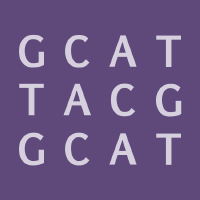Topic Menu
► Topic MenuTopic Editors



Bioinformatics and Intelligent Information Processing
Topic Information
Dear Colleagues,
The 2023 Bioinformatics and Intelligent Information Processing Conference (BIIP2023), the annual conference of the Bioinformatics and Artificial Life Committee of the Chinese Association for Artificial Intelligence (CAAI), will be held in Jinan City, Shandong Province, China, from June 18th to June 20th, 2023. The conference is organized by the CAAI and hosted by the Bioinformatics and Artificial Life Committee of CAAI and the School of Control Science and Engineering of Shandong University. Under the current breakthroughs in large language models of AI, it is of great significance and value to discuss how to use new AI technologies to promote biomedical research. BIIP2023 aims to build such a platform for scientists in related fields. The conference will invite many distinguished experts and scholars in the fields of AI, life science, and medical science to give talks and run tutorials. In addition, sessions will also be set up for talks about the latest research progress and trends of interesting topics. The topic collection plans to present novel and advanced interdisciplinary research achievements in bioinformatics and intelligent information processing. We warmly welcome scholars in the related fields to submit their works to the journals involved in this topic collection. The topics include but are not limited to the following areas:
S1: Self-organization phenomena and mechanisms in natural and human-made systems
S2: Bioanalysis and intelligent processing algorithms
S3: Biological multi-omics data analysis
S4: Biological networks and systems biology
S5: Intelligent drug design
S6: Precision medicine and big data
S7: Biological and health big data analytics
S8: Biomedical image analysis
S9: Digital diagnosis and smart health
S10: Bioinformatics foundations of the brain and brain-like intelligence
S11: Artificial life systems and synthetic biology
S12: Artificial life and artificial intelligence
S13: Digital-based life and intelligent health
S14: Intelligent computing for digital-based life
S15: Other related fields
Prof. Dr. Zhiping Liu
Prof. Dr. Han Zhang
Prof. Dr. Junwei Han
Topic Editors
Keywords
- bioinformatics
- artificial intelligence
- intelligent information processing
- artificial life
- models and algorithms
- systems and simulators
- systems biology
- biomedical big data
- large language models
Participating Journals
| Journal Name | Impact Factor | CiteScore | Launched Year | First Decision (median) | APC |
|---|---|---|---|---|---|

AI
|
5.0 | 6.9 | 2020 | 20.7 Days | CHF 1600 |

Entropy
|
2.0 | 5.2 | 1999 | 21.8 Days | CHF 2600 |

Genes
|
2.8 | 5.5 | 2010 | 14.6 Days | CHF 2600 |

International Journal of Molecular Sciences
|
4.9 | 9.0 | 2000 | 20.5 Days | CHF 2900 |

Machine Learning and Knowledge Extraction
|
6.0 | 9.9 | 2019 | 25.5 Days | CHF 1800 |

Preprints.org is a multidisciplinary platform offering a preprint service designed to facilitate the early sharing of your research. It supports and empowers your research journey from the very beginning.
MDPI Topics is collaborating with Preprints.org and has established a direct connection between MDPI journals and the platform. Authors are encouraged to take advantage of this opportunity by posting their preprints at Preprints.org prior to publication:
- Share your research immediately: disseminate your ideas prior to publication and establish priority for your work.
- Safeguard your intellectual contribution: Protect your ideas with a time-stamped preprint that serves as proof of your research timeline.
- Boost visibility and impact: Increase the reach and influence of your research by making it accessible to a global audience.
- Gain early feedback: Receive valuable input and insights from peers before submitting to a journal.
- Ensure broad indexing: Web of Science (Preprint Citation Index), Google Scholar, Crossref, SHARE, PrePubMed, Scilit and Europe PMC.

